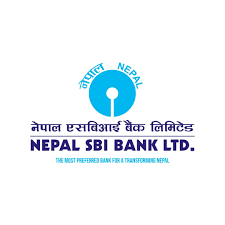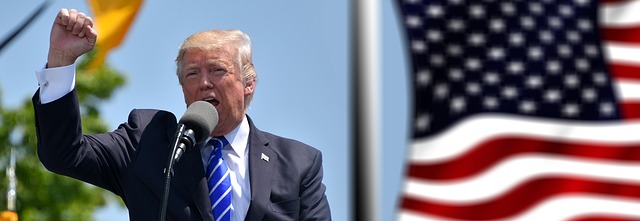The Rift between the Central Bank and the Government – India’s Dilemma

The recent spat between the Reserve Bank of India (RBI) and the central government, the swift resignation of the RBI governor Urjit Patel have serious implications for the government and the central bank alike.
There have been a number of dissenting governors in the past, but this is the first time in many years that a governor is relinquishing his post.

Praising the contributions of the outgoing governor, the government was quick to manoeuvre into a damage control mode, within one day the new governor was announced.
Now, shaktikanta das, a Tamilnadu cadre 1980 batch IAS officer who is known to be a staunch supporter of demonetization is the new governor. Whether the new governor will meekly toe the line of the government or will he stand up to uphold the autonomy of the RBI is yet to be seen.
But if the falling equities market and the dip in the value of Indian rupee is any indication of the crisis looming in the background, the investors are waiting for the new governor’s policies to pan out.
During his initial interaction with the media, Shaktikanta Das was very vocal when he said:
“The RBI is a great institution, it has very long legacy, a very rich legacy. I will try and uphold the professionalism, the core values, the credibility and the autonomy of the Reserve Bank.”
Over the years, the subject of autonomy of the central bank has been a perennial issue across the world. It is because the central bank is both a cash cow and a powerhouse which can rein in financial institutions. Superiority over the central bank means the government can make it a conduit for applying its policies and generously utilize its reserves for funding deficits.
In the USA, when the central bank raises the interest rate, it is sometimes considered as a negative action by the businesses and politicians alike. It is because the developmental activities and expansion of the businesses which were considered to feasible during the low rates now become a non-viable idea.
The worse situation happens when existing businesses trim their operations pushing their employees out of work. During these events, the government will have to spend an enormous amount of money for providing unemployment benefits and become answerable to the citizens. It is often a tense situation for the government.
Last time, when Federal Reserve Chairman Jerome Powell raised the interest rates, Donald Trump, the president of USA was very annoyed and said:
“I’m just saying this: I’m very unhappy with the Fed because Obama had zero interest rates. Every time we do something great, he raises the interest rates.”
Events that exacerbated the rift
Firstly, in August 2017, RBI decreased the quantum of annual dividend to the government, citing escalating costs due to the printing of new notes. The funds transferred from the RBI to the government in the previous years were quite handy in meeting the fiscal targets. This time, the government had to contend with a meager amount.
Secondly, the government wanted to dip into the reserves of the central bank, but RBI has to necessarily maintain 99% of the reserves for ‘AAA’ rating, as this will enable the country to take loans during crisis situations. If the reserves are handed over to the government, the rating will be degraded. It will not only affect the image of the country but also affect the balance sheet of the RBI. This had irked the government.
However, the government cannot be criticized for its hankering, as it has to confront huge expenditures that will devour the last rupee from its coffers: ambitious growth targets that the government is chasing, unexpected infusion of funds to bail out public sector banks, minimum support prices and loan waivers for agriculture farmers- need money.
Thirdly, the RBI made stringent regulations and penalized the banks by adopting exacting capital norms to tackle the huge Non Performing Assets (NPA). It also initiated severe restrictions on the NBFCs, propelled by the loan default issue of Infrastructure Leasing & Financial Services Limited (IL & FS). RBI’s actions are inevitable, considering its role to safeguard the depositors and uphold the best practices in the financial system.
But according to the government, the central bank is ‘throttling growth’, severe restrictions on the banking sector and the NBFCs have affected the liquidity in the country. This had a direct negative effect on investments and job opportunities missing the government’s trajectory of growth.
Fourthly, the finance minister blamed the RBI for the Punjab National Bank fraud. Despite having a supervisory role and the authority to conduct inspections, the fraud had happened right under the nose of RBI, this glaring loophole was pointed out by the economists and policymakers.
Fifthly, the government’s attempt to invoke section 7 of RBI act, to establish its superiority over the central bank and Deputy Governor, Viral Acharya’s aggressive speeches to defend the autonomy of the bank, further added oil to the fire.
The resignation had exposed the tumultuous relationship between the RBI and the government. Further, it also points out that the RBI’s responsibilities are blurred, if it can be properly defined and the line between the centre and the bank delineated, half the job is done.
Then through discussions and ‘sustainable compromises’ both parties can come on the same page, which was reiterated by the present governor thus:
“We have to have stakeholder consultation. The government is not only a stakeholder but the government of the day runs the economy, runs the country and manages major policy decisions. I would like to believe that all issues, howsoever contentious, can be resolved through discussions.”
Rajesh Trichur Venkiteswaran is a freelance journalist. He can be reached at freelancejournalistrajesh@protonmail.com

inDrive partners with NCDM to support flood and landslide victims
_2DslVdcUT3_y8jrglka2yrxb37by3z9xxdj9pcxj5lby1wniqxybkkkm6cdqn1yvegby7cv_NgUMF4o8oZ_dj2aeefvuc2oioi28n5zttxmblc6osu5uwyqjgvnt4djgyuqoqv38kcldslk.png)
DishHome comes up with new festive scheme

NSBL inaugurates its newly relocated Bhairawaha branch

Unilever Nepal's net profit up by 8 percent

Discount for Sanima Bank’s customers at Dusit Thani Himalayan Resort

Nepal Investment Mega, Cimex ink deal on financing BYD EV

NSBL financially support temple, relocates its two branches







Feedback